The match between Borussia Dortmund and Mainz 05 set an example for how different two halves can be. In the first half Dortmund completely dominated Mainz, who defended in a 5-3-2. With half-space combinations as well as chipped balls behind the backline, Dortmund created chances en masse.
In the second half however, Mainz changed their formation to a 4-3-1-2 and made Dortmund struggle with their high press. The following tactical analysis will examine the different approaches of either side and the reasons for two different halves.
Lineups and formations
Borussia Dortmund started the match with their typical 4-2-3-1 formation under Lucien Favre. The Swiss coach still had to replace the injured full-backs Achraf Hakimi and Łukasz Piszczek as well as attacker Paco Alcácer. Therefore, Favre lined up Marius Wolf as a right-back, centre-back Abdou Diallo at left-back, and Mario Götze in attack.
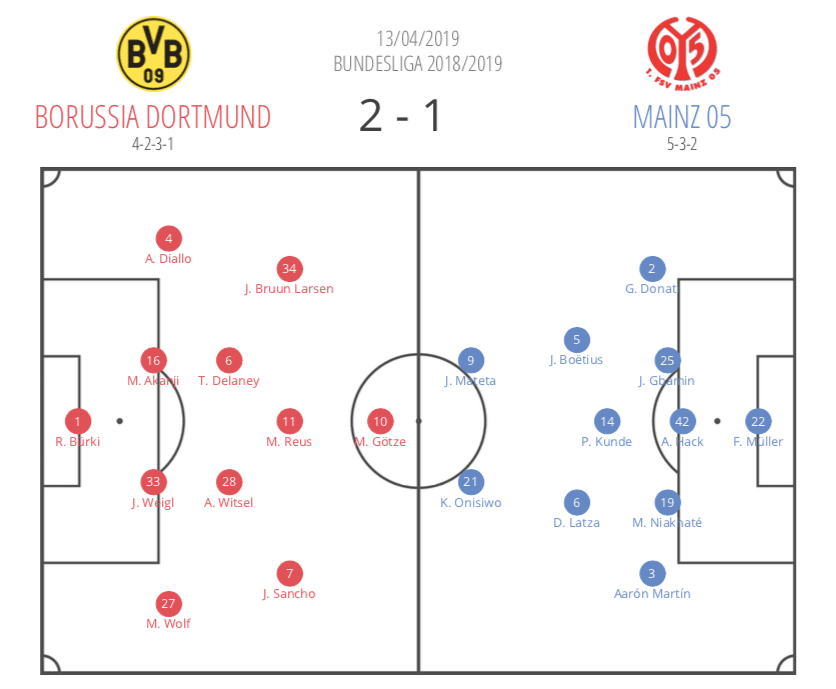
Mainz on the other hand started the match with a different formation than in their recent games. Sandro Schwarz set his side up in a 5-3-2 in defence. As their wing-backs pushed up the pitch, Mainz played in a 3-5-2 in possession. With the strike duo consisting of Karim Onisiwo and Jean-Philippe Mateta, Mainz wanted to threaten Dortmund’s goal up front.
Mainz asymmetrical press
In the first half, Mainz had several defensive issues. At first they occasionally tried to disrupt Dortmund’s build-up but failed because of their asymmetrical setup. Mainz pressed with two strikers and three central midfielders. As long as Dortmund circulated the ball in central areas, Mainz could prevent them from playing forward passes.
But whenever the home-side played out to left-back Abdou Diallo, Mainz lacked a player to immediately press the opposition full-back. While the opposition right-back Wolf was pressed by left wing-back Aarón Martín, the right man of Mainz midfield three was supposed to press Diallo. As all Mainz midfielders took over central positions, the route towards Diallo became very long. This allowed Diallo to have time and space on the ball.
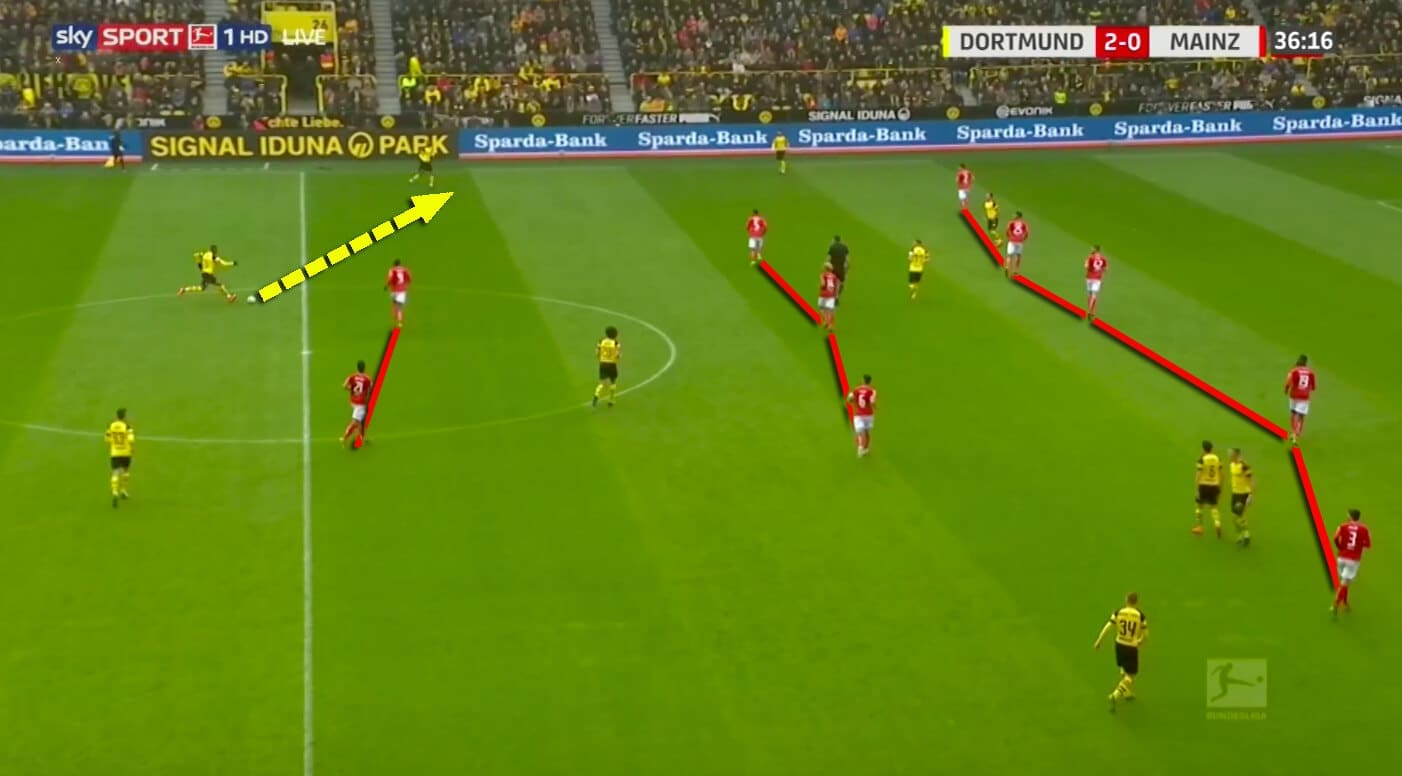
As a consequence, Dortmund could often progress up the pitch on the left wing and create chances from there. The attacking zones graphic shows that Dortmund mainly attacked down the left side.

In addition to that, Dortmund were often offered way too much time and space on the ball having progressed into Mainz’s half. That allowed Witsel and Delaney to pull the strings in midfield.
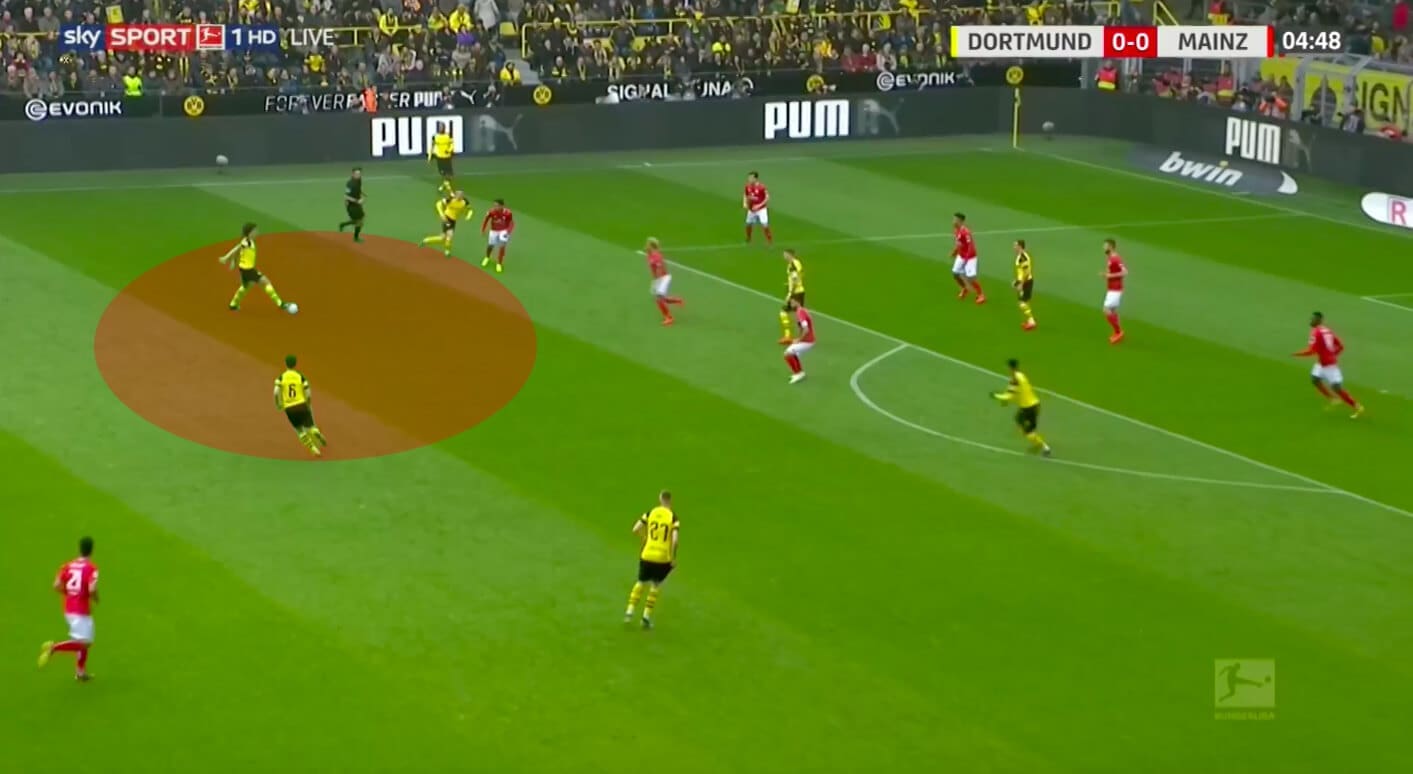
Mainz struggle to defend the space behind the back five
Secondly, Mainz struggled with the chipped balls Dortmund used to get behind the back line. The back five situationally failed to stay on one line which gave Dortmund’s attackers the advantage of staying in an onside position despite being behind the opposition defender.
Moreover, Mainz’s central defenders often did not seem to be aware of a possible threatening ball in behind. Therefore, they failed to drop early enough in order to clear the ball.

Dortmund’s half-space attacks
Last but not least, Mainz offered Dortmund space between the lines in the half-spaces. Although Mainz were vertically and horizontally compact, Schwarz’s side had bad staggering and therefore could not stop Dortmund from receiving between the lines. Nearly all of Dortmund’s chances were created from the left half-space.
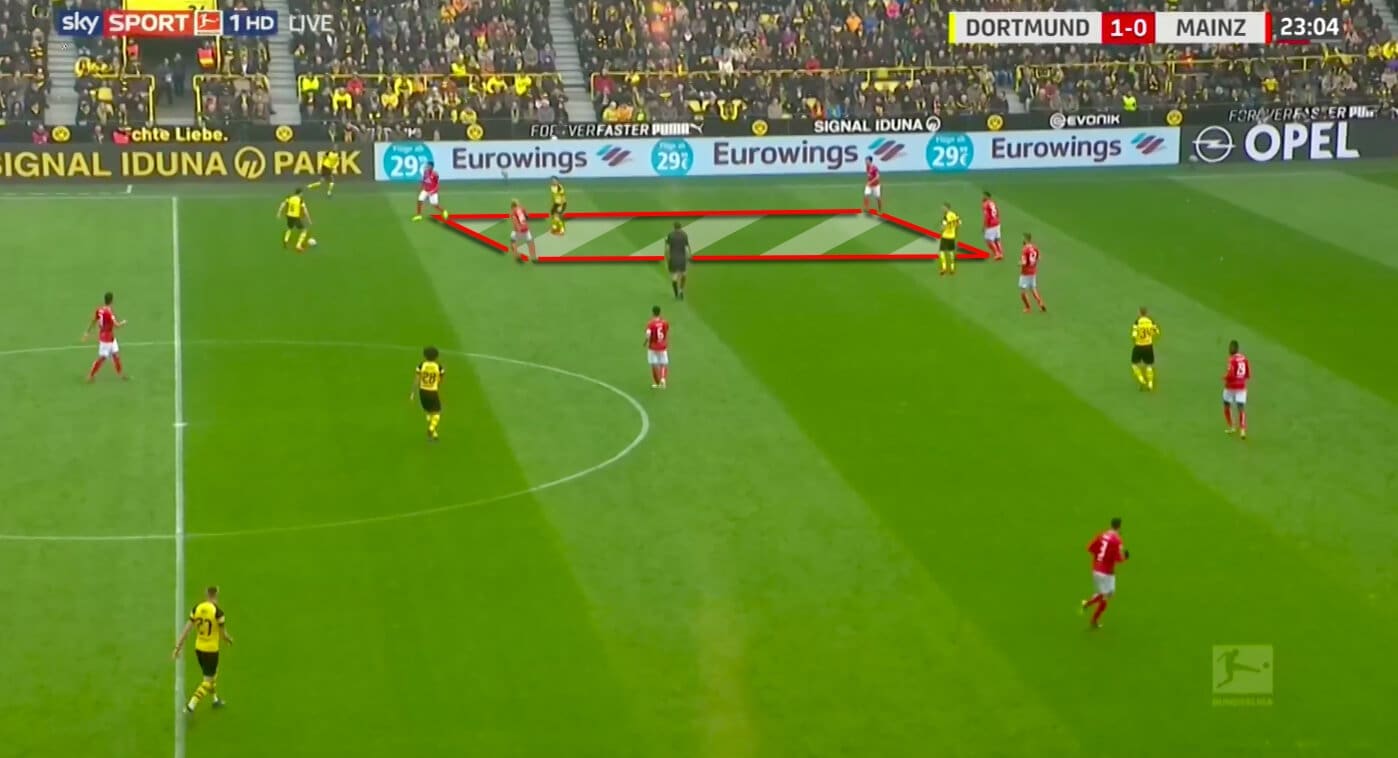
As is so often the case, Dortmund combined through the space between the lines before former Manchester City youth player Jadon Sancho scored the second goal for his side.
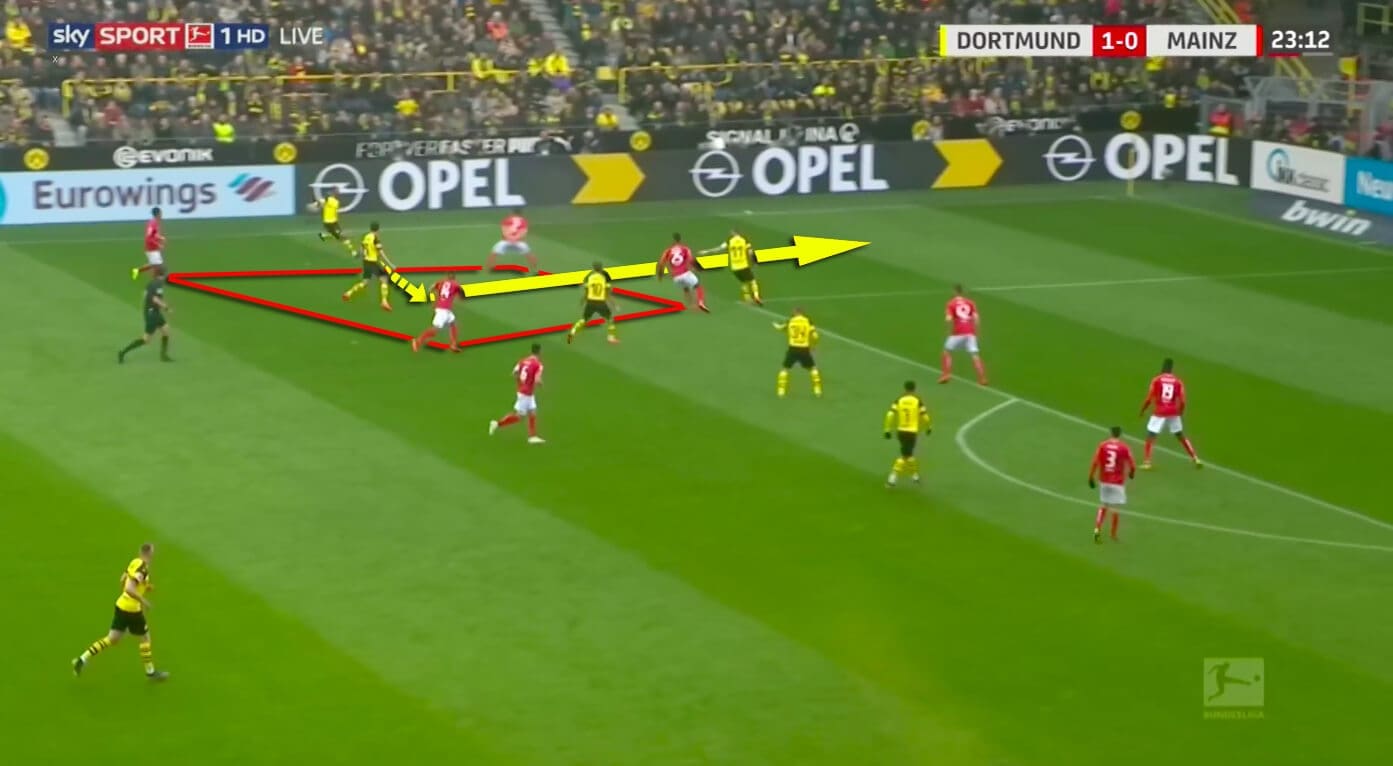
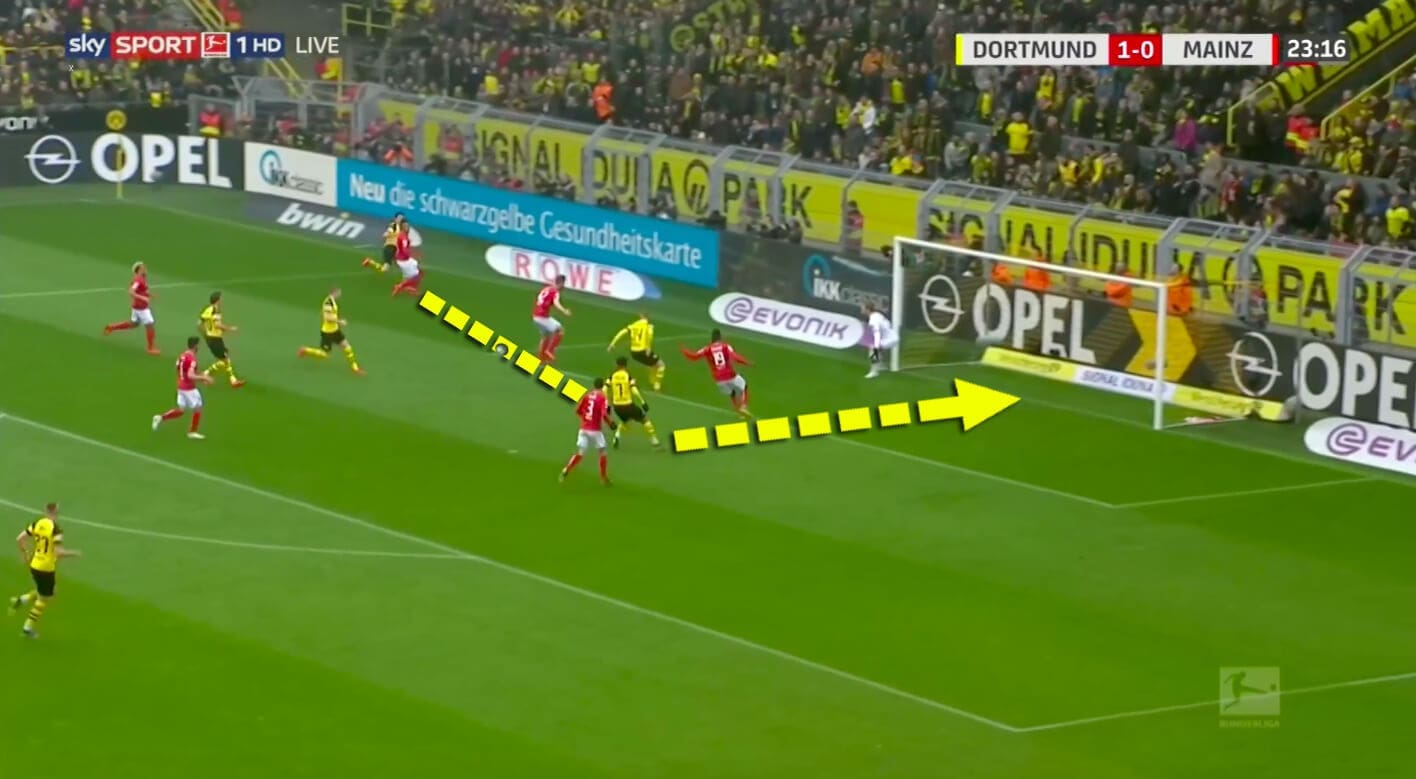
Dortmund’s high press enables domination
However, the high possession rate of Borussia Dortmund was another aspect which enabled Dortmund to create chance after chance. The reason lying behind this was the efficiency of their high press.
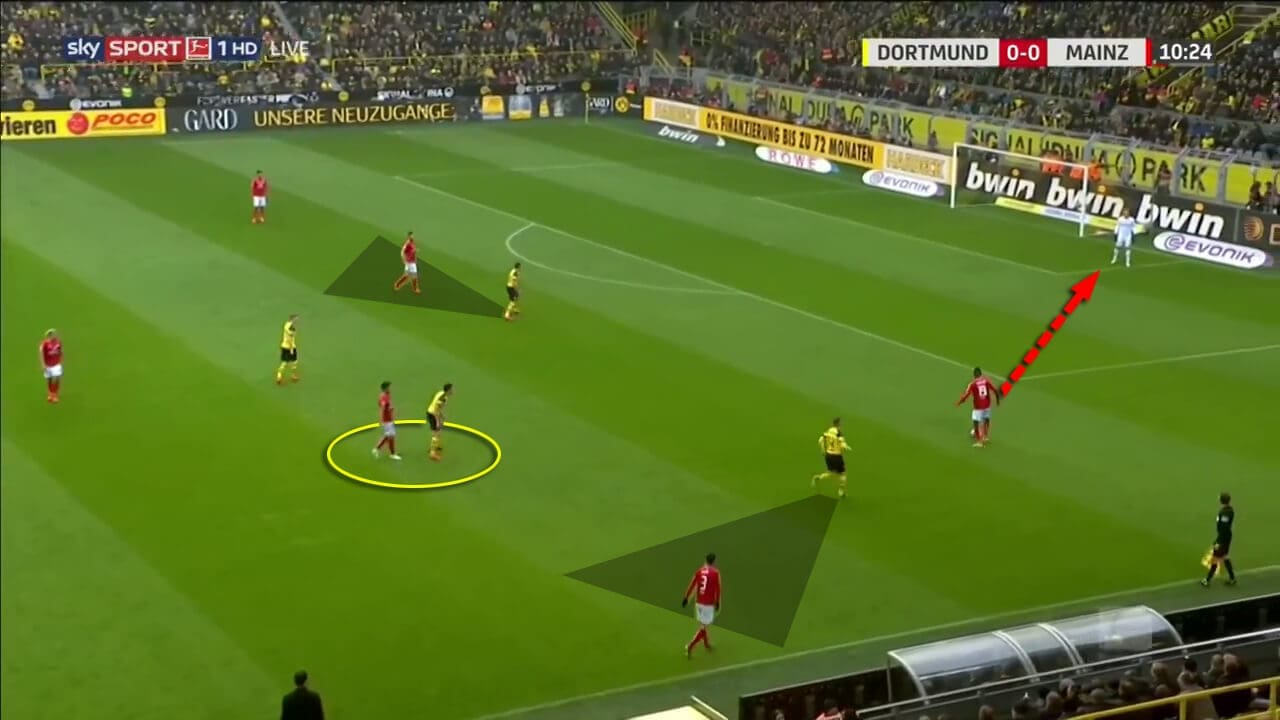
Playmaker Marco Reus often supported striker Götze during the press. Once Mainz played out wide, the near-side striker pressed the opposition centre-back while Götze prevented Mainz from switching play.
Mainz change to a 4-3-1-2
In the second half, Schwarz undertook a change of system. Different to the first half, Mainz played with a 4-3-1-2 formation.
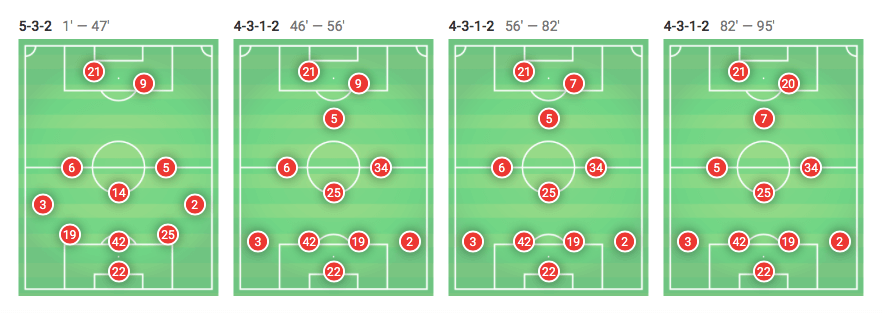
With one more player in midfield, Mainz were capable of pressing higher.
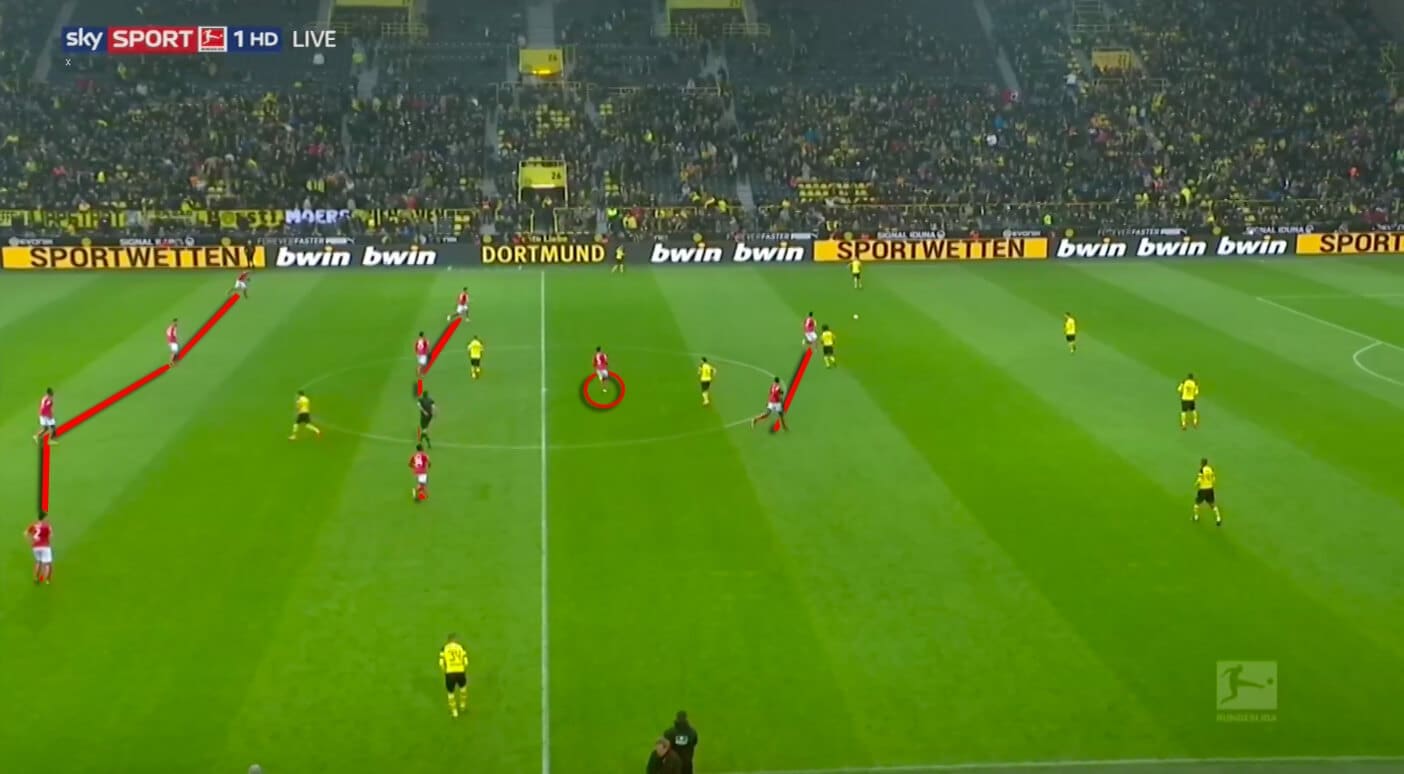
Playmaker Jean-Paul Boëtius occasionally moved forward to create a front three when pressing Dortmund. Meanwhile, the midfield three used a zonal marking approach and situationally marked Dortmund’s ball-near midfielders.
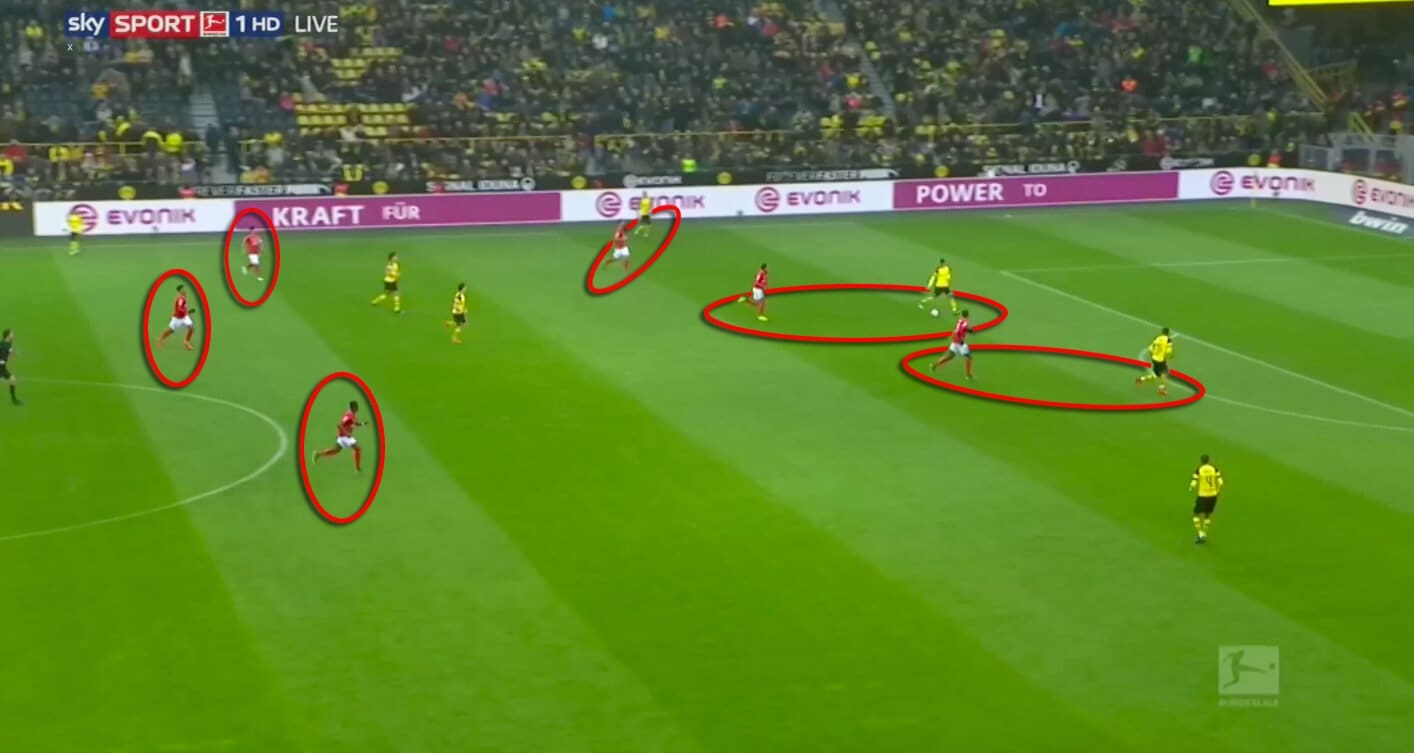
As left-back Diallo was more actively pressed by Mainz, he had to frequently play long balls down the line. Since right-back Donati stayed close to Dortmund’s winger Jacob Bruun Larsen, the latter struggled to hold onto the ball and often lost possession.
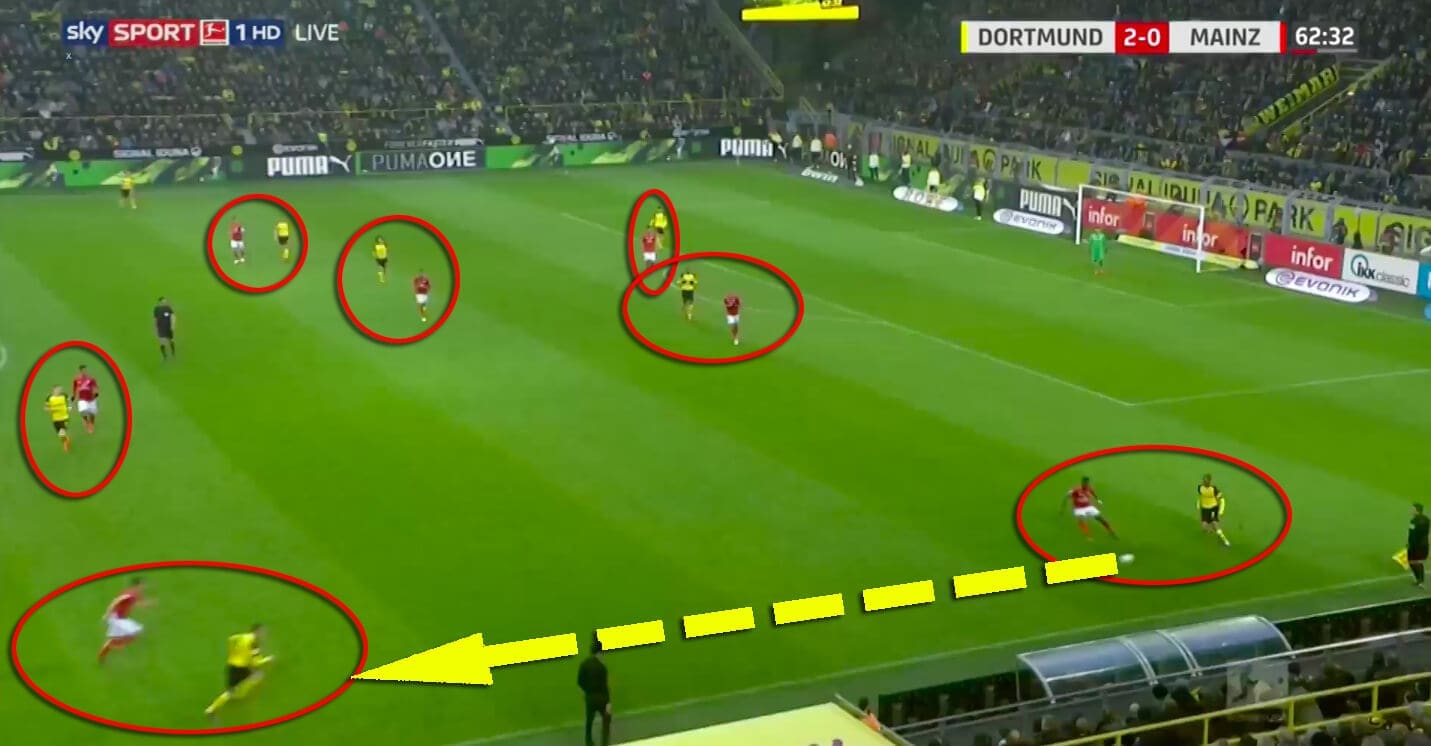
With their high press, Mainz were also able to prevent Dortmund from playing controlled balls behind the backline. By pressing the opposition midfielders, Dortmund were incapable of playing precise chipped balls like in the first half.
Due to Mainz’s well executed press, Dortmund’s possession rate significantly decreased in the second half, as one can see below.
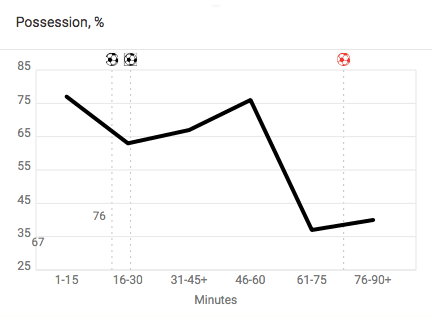
Furthermore, Mainz’s defensive department seemed more comfortable with a back four. The three central midfielders could use their cover-shadow to close the gaps between the defenders in order to prevent any through passes as illustrated below.
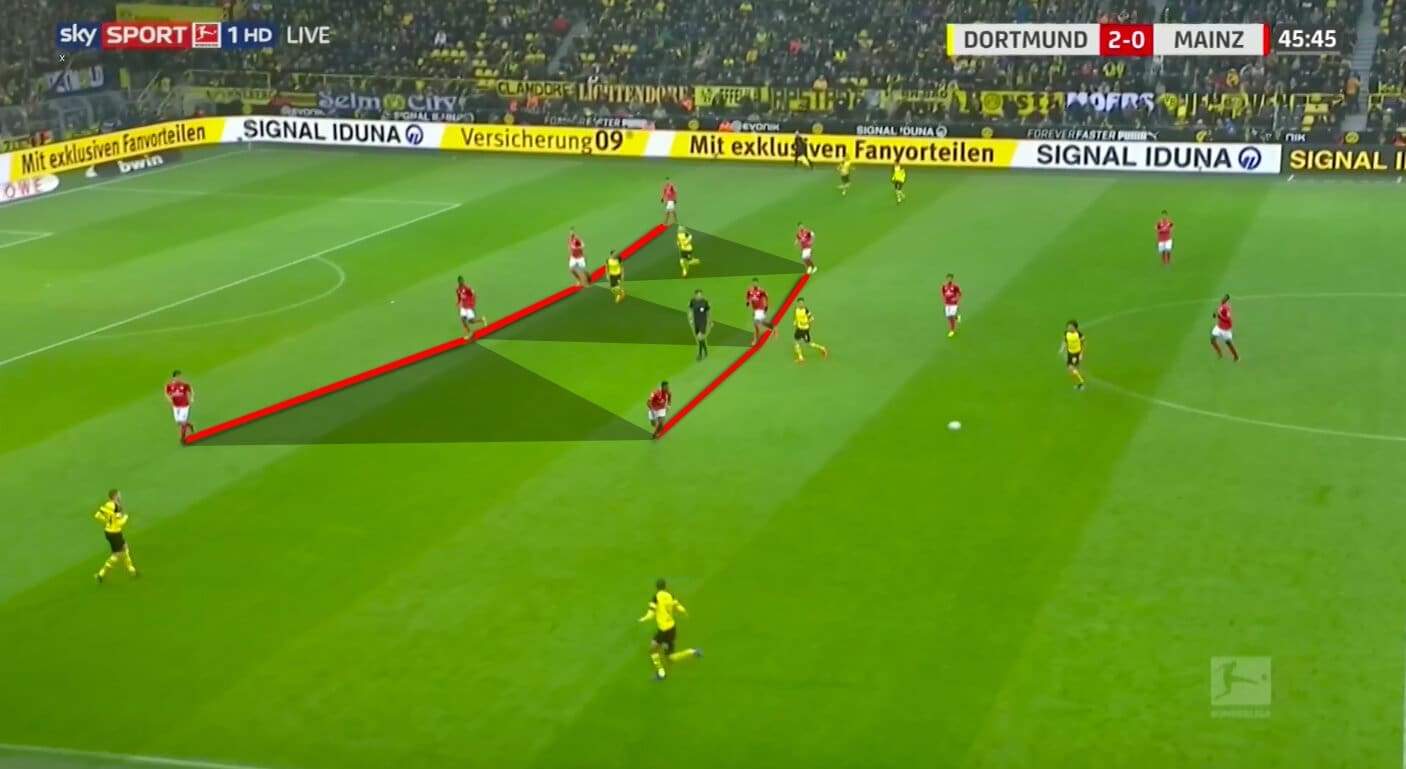
Mainz create chances
In addition to their well-executed press, Mainz also created chances in the second half. From open play, Schwarz’s team often utilised the space between the lines. With laser passes from their defenders and defensive midfielders, Mainz often found attacking players between Dortmund’s midfield and defensive line.
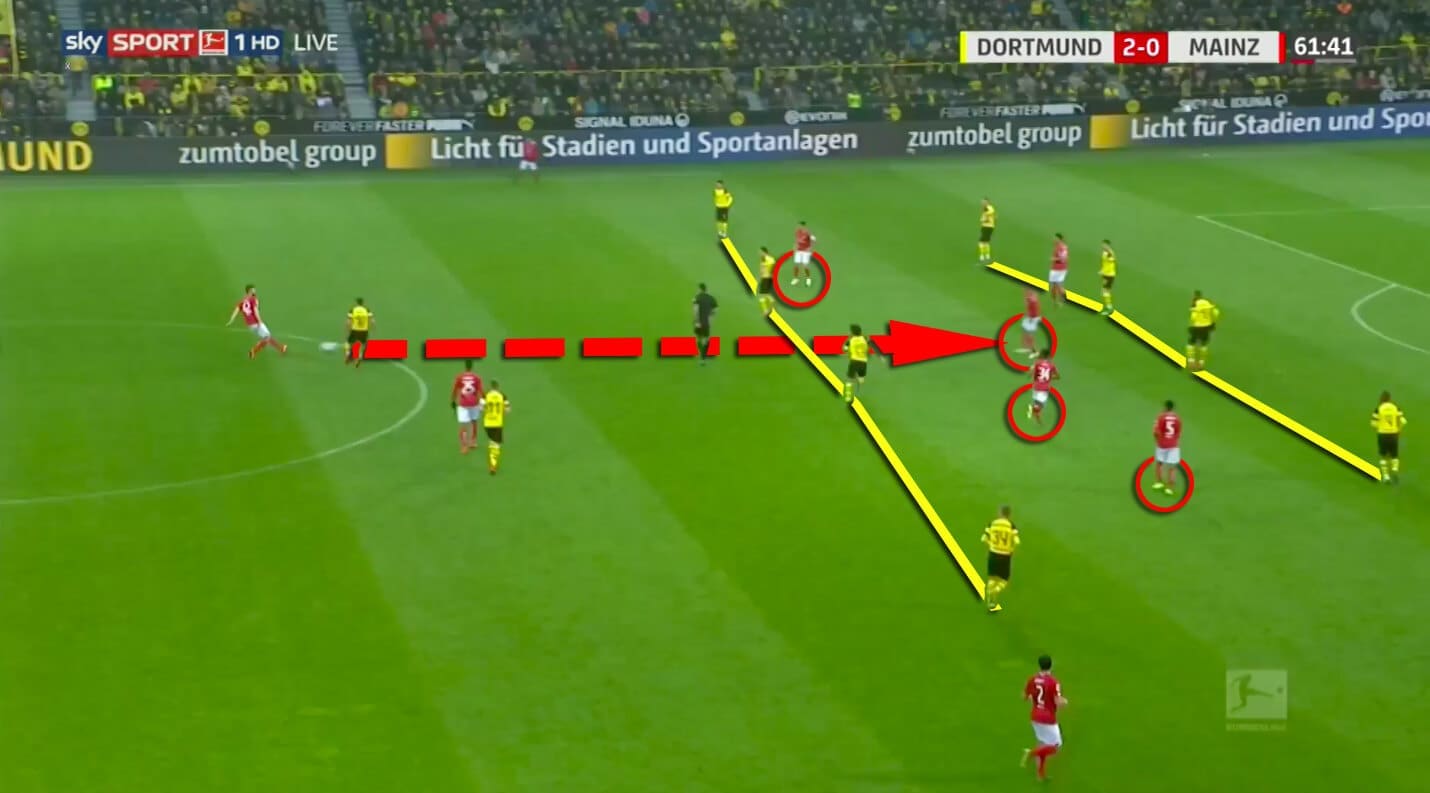
Another attacking concept was to use their full-backs to support the attack in wide areas. When attacker Onisiwo hit the woodwork in the second half, for instance, Mainz had played out into a wide area and utilised Dortmund’s disorganisation in the centre by playing back inside again.
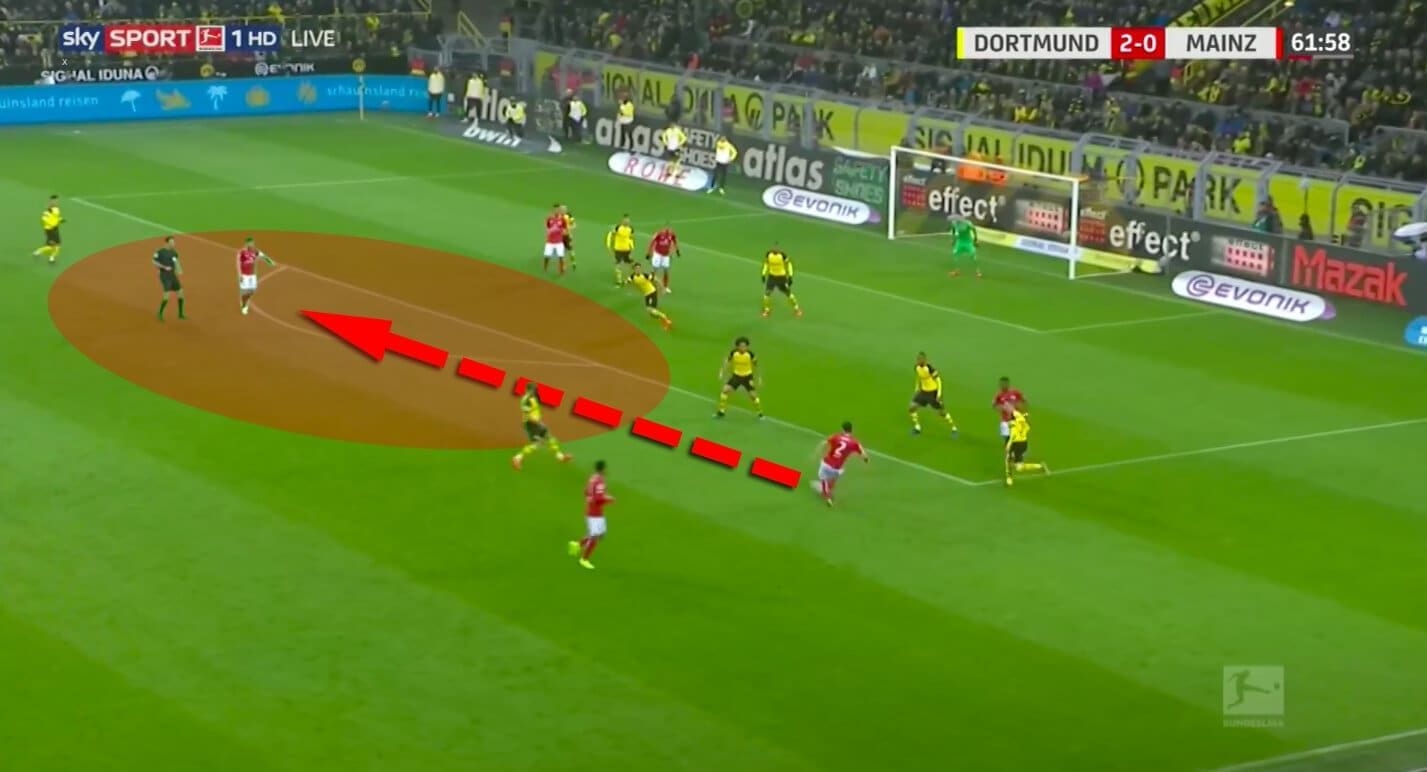
Due to their domination within Dortmund’s half, Mainz could produce promising set-piece situations as well. With strong corner-kicks they nearly turned the match around. The substituted striker Robin Quaison had a chance to score after a corner-kick and Mainz could even have equalised after another corner.
Conclusion
As the xG values show, Mainz were capable of neutralising Dortmund’s dominance in the second half and would have even deserved to have scored the equaliser.
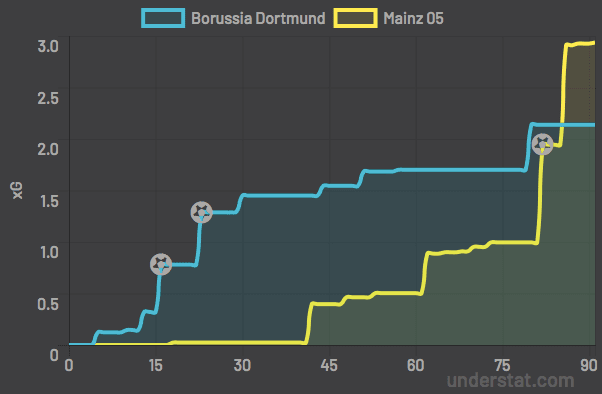
All in all, both sides dominated the opposition for one half. Whereas Dortmund thrashed Mainz’s defensive setup in the first half, the visitors managed to disrupt the build-up of Favre’s side in the second half and thereby keep them away from their own goal.
If you love tactical analysis, then you’ll love the digital magazines from totalfootballanalysis.com – a guaranteed 100+ pages of pure tactical analysis covering topics from the Premier League, Serie A, La Liga, Bundesliga and many, many more. Buy your copy of the April issue for just ₤4.99 here, or even better sign up for a ₤50 annual membership (12 monthly issues plus the annual review) right here.

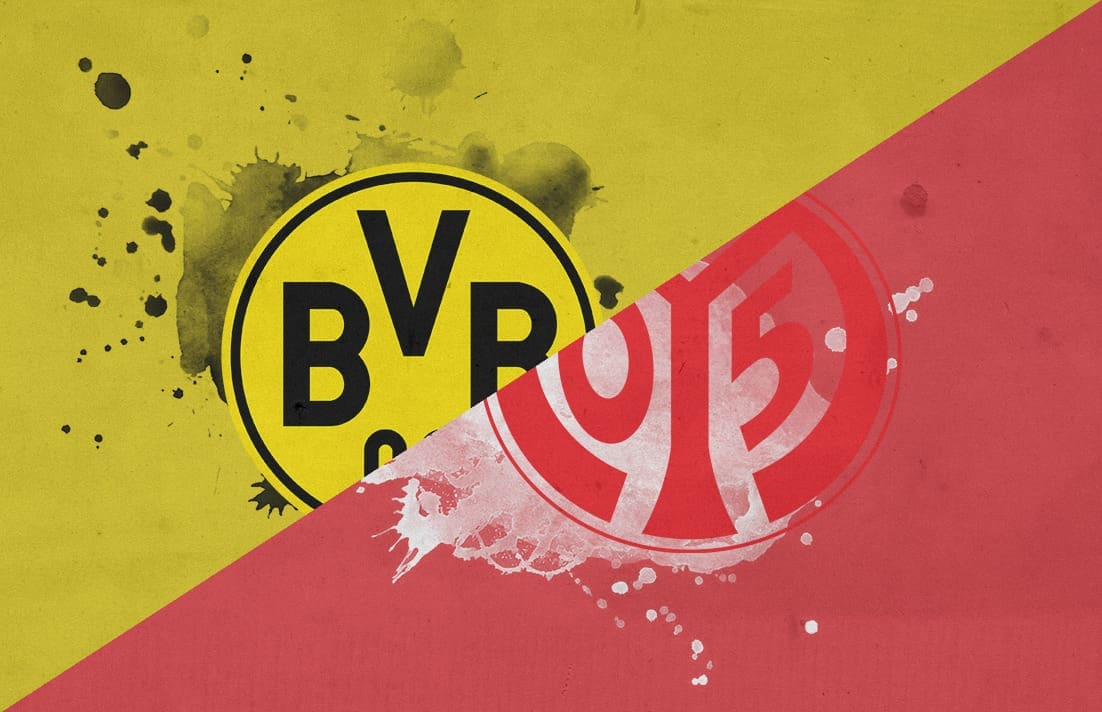



Comments